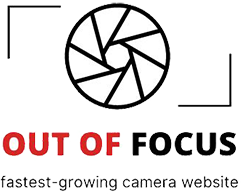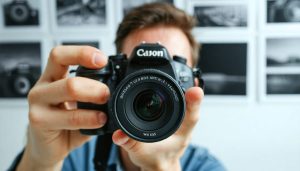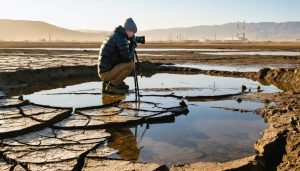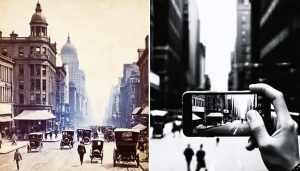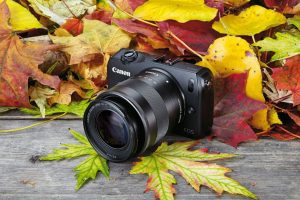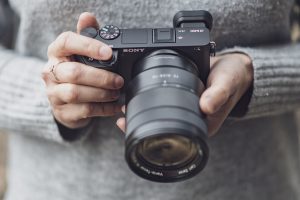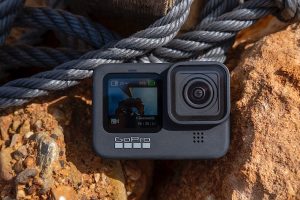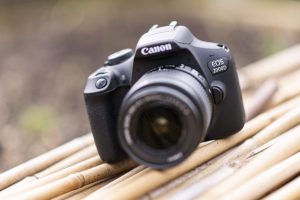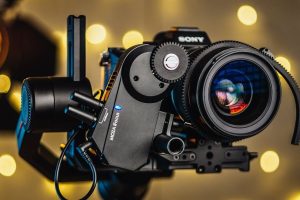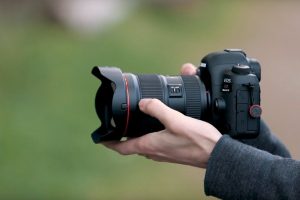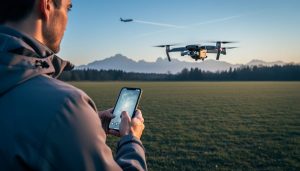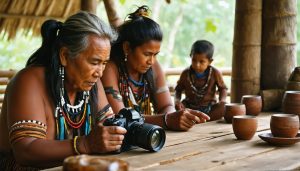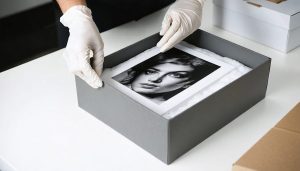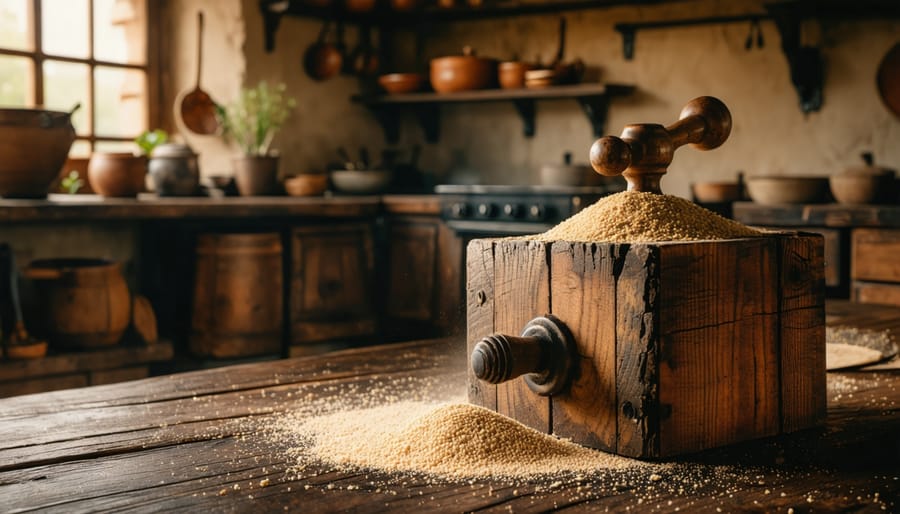
The art of culinary photography intertwines with centuries of gastronomic evolution, creating a visual narrative that spans from ancient hearth cooking to modern molecular gastronomy. Through the lens of documenting cultural heritage, we explore how food preparation techniques have transformed from basic survival skills into sophisticated expressions of creativity and cultural identity.
From the first documented recipes in Mesopotamian clay tablets to the explosion of social media food photography, culinary arts have consistently reflected humanity’s relationship with sustenance, celebration, and innovation. Ancient civilizations developed cooking methods that still influence modern kitchens – the Roman’s sauce reductions, Chinese stir-frying techniques, and Middle Eastern spice combinations remain fundamental to contemporary cuisine.
The Renaissance period marked a crucial turning point, elevating cooking from mere sustenance to an art form. European royal courts competed to create increasingly elaborate dishes, while their master chefs documented recipes and techniques in unprecedented detail. These historical records now provide photographers with rich visual references for capturing traditional cooking methods and their modern interpretations.
Today’s culinary landscape represents a fusion of these historical traditions with cutting-edge innovation, offering photographers unique opportunities to capture both time-honored techniques and revolutionary cooking methods. This convergence of past and present creates compelling visual narratives that resonate with audiences while preserving important cultural knowledge for future generations.
The Art of Food Photography Through Time
Early Food Photography (1850-1940)
The journey of food photography began during photography’s infancy, as pioneers experimented with early photographic techniques to capture culinary subjects. In the 1850s, photographers faced significant challenges: long exposure times, cumbersome equipment, and the limitation of black-and-white imagery made food photography particularly demanding.
The earliest food photographs were primarily documentary, capturing market scenes and kitchen life rather than artistic compositions. These images required subjects to remain perfectly still, often for several minutes, making fresh food particularly challenging to photograph before it wilted or melted under hot studio lights.
By the 1890s, developments in camera technology and faster exposure times opened new possibilities. Pioneers like Henry Fox Talbot began experimenting with still life compositions featuring fruits and table settings. The advent of halftone printing in the late 19th century finally allowed photographs to be reproduced in cookbooks and magazines, though hand-drawn illustrations remained prevalent due to their superior clarity.
The real breakthrough came in the 1920s and ’30s with the introduction of color photography. Autochrome plates, followed by Kodachrome film, revolutionized food photography by finally capturing the vibrant colors that make food appealing. Magazines like “Good Housekeeping” began featuring color food photographs, setting new standards for culinary presentation and documentation.
The Rise of Color Food Photography
The introduction of color film in the 1940s revolutionized how we document and appreciate culinary arts. Before this breakthrough, food photography existed primarily in black and white, limiting the ability to capture the vibrant essence of dishes. When Kodachrome hit the market in 1942, it opened new possibilities for food photographers and publications alike.
The 1950s marked a turning point as magazines like Gourmet and Better Homes & Gardens began featuring stunning color spreads of dishes, transforming how Americans viewed food presentation. These vivid images not only documented recipes but also influenced how home cooks plated their meals, emphasizing color combinations and garnishing techniques that would have been lost in monochrome.
Food styling emerged as a distinct profession during this period, with practitioners developing innovative techniques to make dishes look appetizing under harsh studio lights. They discovered that undercooking pasta kept it looking fresh, and brushing meat with glycerin created an appealing glossy finish that lasted through long photo sessions.
The rise of color food photography also contributed significantly to cookbook evolution. Authors could now include step-by-step visual guides with accurate color representation, making complex techniques more accessible to home cooks. This visual revolution helped democratize culinary knowledge and elevated food photography to an art form in its own right, laying the groundwork for today’s Instagram-worthy food culture.
Camera Techniques for Cultural Documentation
Lighting Techniques for Traditional Kitchen Settings
When documenting traditional kitchen settings, lighting plays a crucial role in capturing authentic moments while preserving the historical essence of culinary arts. Natural light streaming through windows can create beautiful, soft illumination that highlights the textures of aged copper pots and worn wooden cutting boards. Position your subject near windows during golden hour for warm, inviting tones that emphasize the timeless quality of traditional cooking spaces.
For kitchens with limited natural light, consider using continuous LED panels with adjustable color temperature. Set them to around 2700-3000K to mimic the warm glow of traditional hearth fires or vintage incandescent bulbs. This approach helps maintain period authenticity while providing adequate lighting for your camera.
Diffusion is your best friend in these environments. Use translucent curtains as natural diffusers for window light, or employ portable diffusion panels for artificial lighting. This helps soften harsh shadows while maintaining the dimensional quality of cooking implements and architectural details.
Consider the historical context of your setting when planning your lighting setup. Traditional kitchens often featured directional light from specific sources – windows, hearths, or overhead lanterns. Recreate these lighting patterns using carefully positioned lights to maintain historical accuracy.
Don’t overlook practical challenges like smoke and steam. These elements can create atmospheric effects but may also interfere with your lighting. Position your lights at angles that turn these potential obstacles into creative advantages, using them to add depth and atmosphere to your images.
Remember to balance exposure with mood. While technical perfection is important, sometimes slightly underexposing the scene can enhance the rustic, historical atmosphere. Use spot metering to maintain detail in important elements while allowing darker areas to create depth and dimension in your composition.
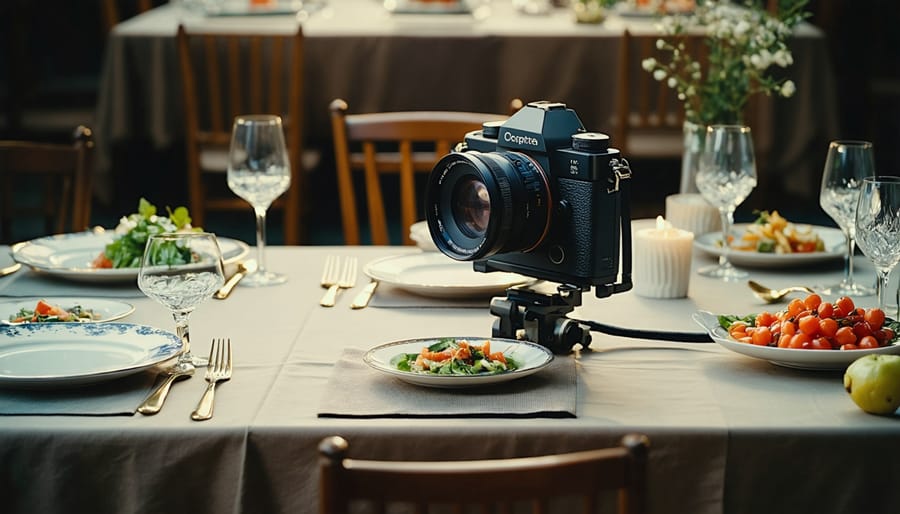
Action Photography in Food Preparation
Action photography in food preparation has played a crucial role in documenting culinary history since the advent of high-speed photography in the 1950s. These dynamic images capture the essence of cooking techniques that words alone cannot convey, from the dramatic splash of deglazing a pan to the mesmerizing spiral of hand-pulled noodles.
The breakthrough came when Harold Edgerton pioneered strobe photography, allowing photographers to freeze motion in milliseconds. This technology revolutionized how we document cooking processes, revealing the precise moment when flour clouds billow during kneading or when oil droplets scatter during a stir-fry.
Throughout the 1960s and 1970s, food magazines began incorporating action shots into their cooking tutorials, helping readers better understand techniques through visual storytelling. These images captured the graceful movements of hands shaping pasta, the precise moment of flipping crêpes, and the artistry of garnishing plates.
Modern food action photography employs sophisticated equipment like high-speed cameras capable of shooting thousands of frames per second. This allows photographers to capture intricate details such as the exact moment when egg whites transform into stiff peaks or when caramel threads form delicate patterns.
The cultural impact of these images extends beyond mere documentation. Action shots of traditional cooking methods have helped preserve ancient techniques, showing future generations the proper way to hand-roll sushi, fold dumplings, or toss wok-fried dishes. These photographs serve as both historical records and educational tools.
Digital technology has democratized action food photography, enabling both professionals and enthusiasts to document cooking processes with unprecedented clarity. Social media platforms have created a new avenue for sharing these images, contributing to a visual encyclopedia of global culinary techniques and traditions.
Today’s action food photography continues to evolve, incorporating elements like slow-motion video and stop-motion sequences to create compelling narratives about food preparation and its cultural significance.
Preserving Heritage Through the Lens
Documentary-Style Food Photography
Documentary-style food photography goes beyond simply capturing beautiful dishes – it tells the story of culinary traditions, cultural heritage, and the people behind the food. This authentic approach to food photography has become increasingly important in preserving family traditions and documenting diverse food cultures around the world.
When photographing food for documentary purposes, natural lighting is essential. Unlike commercial food photography, which often relies on artificial lighting setups, documentary photographers typically work with available light to capture genuine moments in kitchens, markets, and homes. This creates a more authentic feel that reflects the real environment where food preparation takes place.
Composition in documentary food photography focuses on context rather than just the final dish. Include elements that tell the complete story – weathered hands kneading dough, steam rising from traditional cooking vessels, or ingredients in their natural state. These details help viewers understand not just what the food looks like, but how it comes together and its cultural significance.
Equipment choices should prioritize versatility and discretion. A mirrorless camera with good low-light performance is ideal, as many kitchens and dining spaces have challenging lighting conditions. A 35mm or 50mm prime lens often works well, allowing you to capture both wide environmental shots and detailed close-ups without being intrusive.
The key to successful documentary food photography lies in building relationships with your subjects. Take time to understand the significance of different dishes, cooking methods, and traditions. Listen to stories about family recipes passed down through generations. This knowledge will inform your photography and help you capture meaningful moments that truly represent the culture you’re documenting.
Remember to photograph the entire process, from ingredient selection to final presentation. Include shots of cooking techniques, tools, and serving traditions. These elements create a comprehensive visual record that helps preserve culinary heritage for future generations.
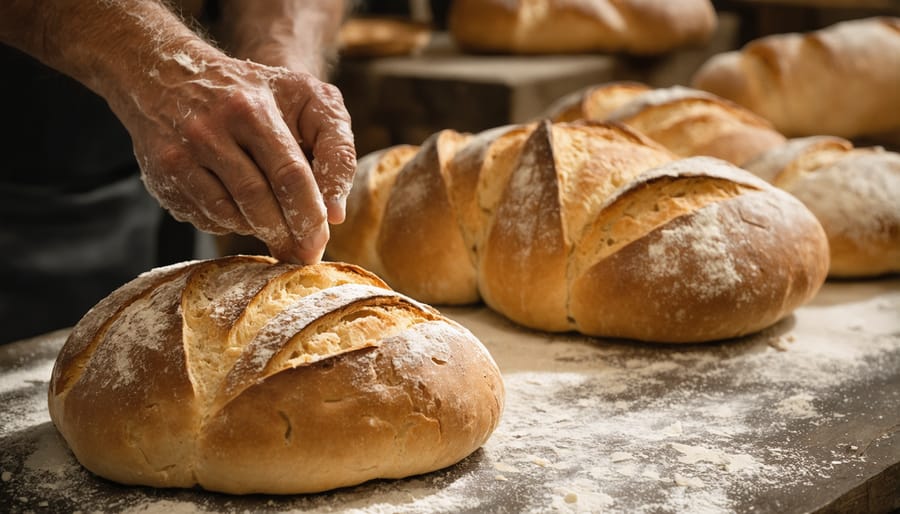
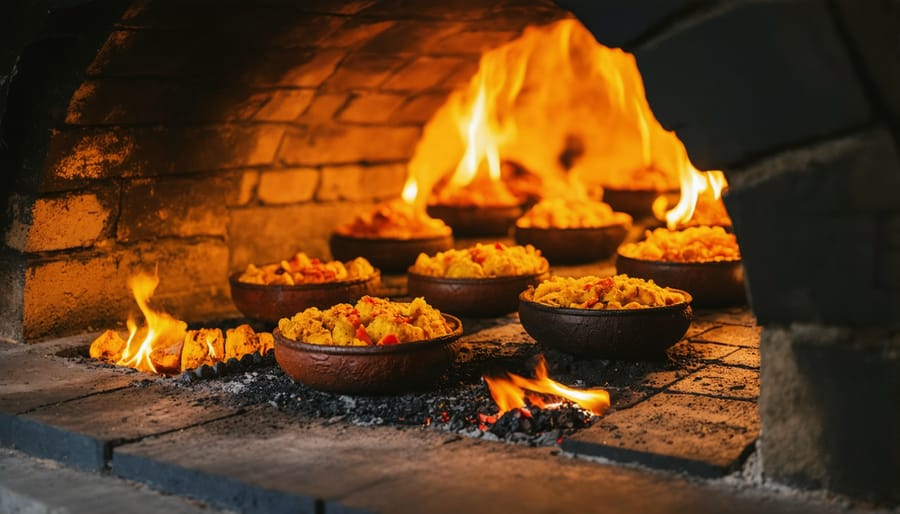
Equipment Recommendations for Cultural Photography
When documenting culinary history and traditions, having the right photography equipment is crucial for capturing both the intricate details of food preparation and the broader cultural context. For professional-quality results, a full-frame mirrorless camera or DSLR is recommended, with the Sony A7 III and Canon EOS R6 being excellent all-around choices that perform well in varying light conditions often encountered in kitchens and dining spaces.
For lenses, a versatile 24-70mm f/2.8 serves as an excellent primary lens, allowing you to capture both wide shots of kitchen scenes and closer details of individual dishes. A macro lens, such as a 90mm or 100mm f/2.8, is essential for detailed close-ups of ingredients, textures, and plating techniques. Consider adding a fast 35mm prime lens for environmental portraits and candid shots of chefs at work.
Lighting equipment is particularly important when documenting culinary arts. A portable flash unit with diffusion accessories helps manage challenging kitchen lighting, while LED panels provide continuous lighting that’s especially useful for video documentation. A collapsible reflector is invaluable for bouncing available light and filling shadows.
For stability in low-light conditions, invest in a sturdy tripod with a center column that can be positioned horizontally for overhead food shots. A quality ball head allows quick composition adjustments, essential when working in busy kitchen environments.
Additional accessories should include:
– Polarizing filters to manage reflections on glazed dishes
– A remote shutter release for shake-free images
– A color checker passport for accurate food color reproduction
– A laptop with tethering capabilities for immediate review
– Portable external hard drives for on-site backup
Consider weather-sealed equipment if you’ll be documenting outdoor cooking traditions or working in humid kitchen environments. A camera bag with good organization and quick access is essential for protecting your gear while keeping it readily accessible during fast-paced culinary events.
Remember that while high-end equipment can enhance your capabilities, understanding lighting, composition, and timing remains paramount in cultural culinary photography.
Modern Tools for Historical Documentation
In today’s digital age, documenting culinary history has evolved far beyond handwritten recipes and aging photographs. Advanced technology now plays a crucial role in preserving our gastronomic heritage through modern preservation techniques that combine traditional documentation methods with cutting-edge tools.
High-resolution digital cameras and specialized food photography equipment have revolutionized how we capture culinary traditions. These tools allow photographers to document not just the final dishes, but entire cooking processes in stunning detail. Professional-grade macro lenses reveal intricate textures and techniques that might otherwise go unnoticed, while temperature-controlled lighting systems ensure that hot dishes are captured at their peak presentation.
3D scanning technology has emerged as a game-changer in culinary documentation. Museums and cultural institutions now create detailed digital models of historical cooking implements and serving vessels, preserving their exact dimensions and characteristics for future generations. These scans can be shared globally, allowing researchers and enthusiasts to study artifacts without physical access to them.
Video documentation has become increasingly sophisticated, with 4K and 8K cameras capturing the nuanced movements of traditional cooking techniques. Time-lapse photography reveals slow-cooking processes in compelling visual narratives, while slow-motion capabilities help preserve precise hand movements that define cultural cooking methods.
Digital archiving systems have transformed how we store and share culinary knowledge. Cloud-based platforms protect against physical deterioration and loss, while AI-powered indexing makes vast collections of recipes and techniques searchable by ingredients, methods, or cultural origins. These systems often include metadata about regional variations, seasonal considerations, and historical context.
Social media platforms and dedicated food documentation apps have democratized the preservation process, allowing home cooks and professional chefs alike to contribute to a living archive of culinary traditions. These platforms often include geolocation data, helping researchers track the evolution and spread of cooking techniques across regions and cultures.
Sound recording equipment captures the audio elements of cooking – from the sizzle of ingredients hitting a hot wok to the rhythm of knife work – providing a more complete sensory documentation of culinary techniques that future generations can reference and study.
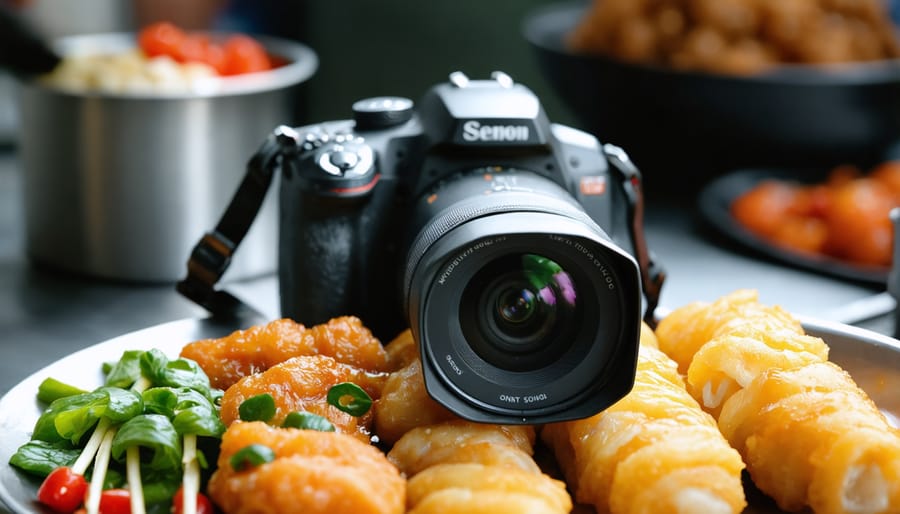
Photography has become an indispensable tool in preserving and documenting the rich tapestry of culinary heritage across cultures and generations. Through the lens of talented food photographers, we’ve managed to capture not just the visual appeal of dishes, but also the techniques, traditions, and cultural significance behind them. These images serve as a historical record, allowing future generations to understand how cooking methods, plating styles, and ingredient presentations have evolved over time.
The digital age has revolutionized our ability to document culinary arts, creating vast archives of food preparation techniques, traditional cooking methods, and celebratory feasts that might otherwise be lost to time. Professional food photographers have played a crucial role in ensuring that ancient recipes and cooking traditions are preserved with stunning clarity and detail, helping to bridge the gap between past and present culinary practices.
Moreover, photography has democratized access to culinary knowledge, allowing people worldwide to learn from and appreciate different food cultures. Through carefully composed images, we can study the intricate details of food preparation, from the precise knife cuts of Japanese sushi masters to the complex layering of French pastries. These visual records not only preserve techniques but also inspire new generations of chefs to innovate while respecting traditional methods.
As we look to the future, the importance of photography in documenting culinary heritage only continues to grow, serving as both an educational tool and a testament to humanity’s rich gastronomic history.
